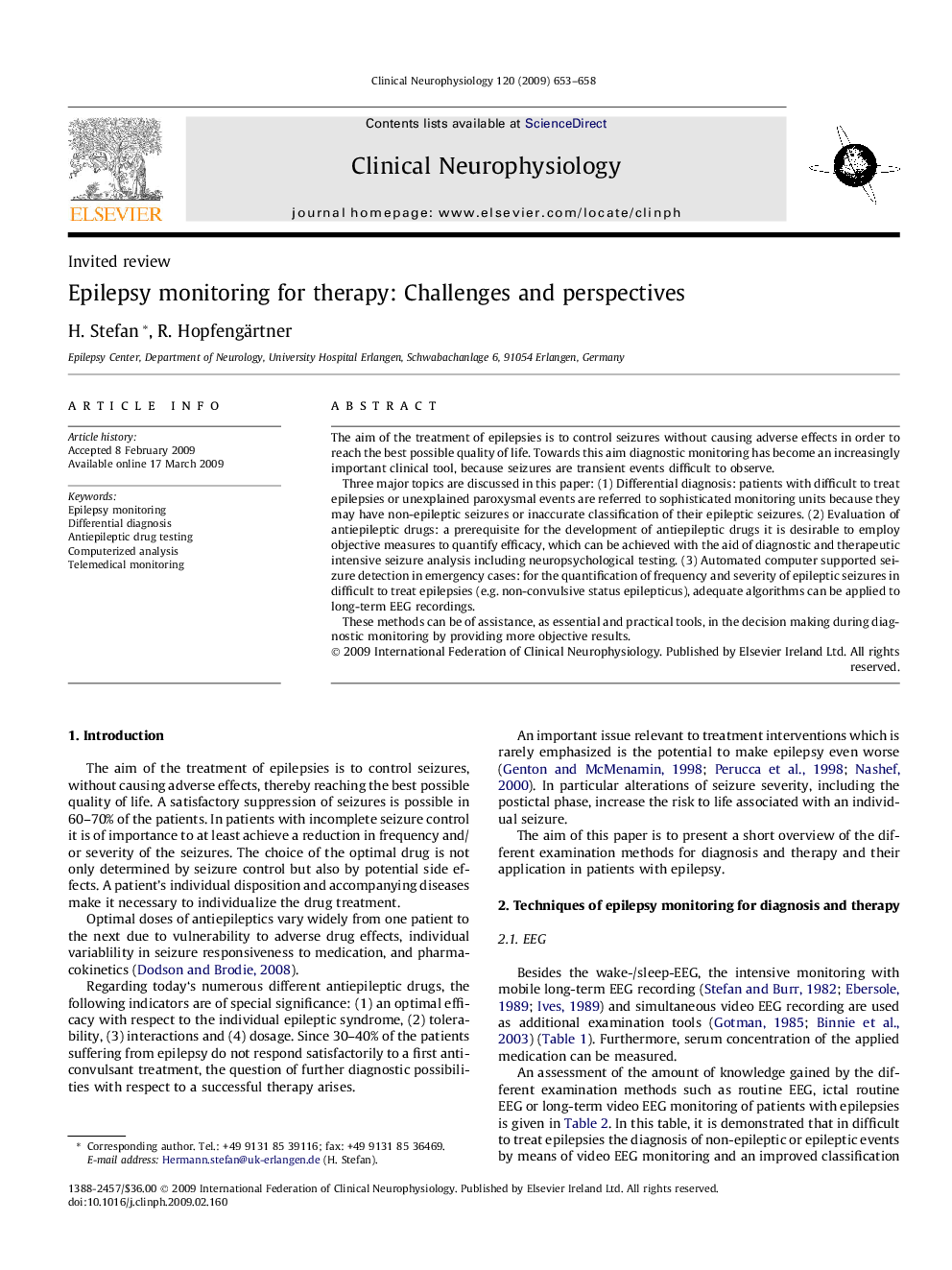| Article ID | Journal | Published Year | Pages | File Type |
|---|---|---|---|---|
| 3046308 | Clinical Neurophysiology | 2009 | 6 Pages |
The aim of the treatment of epilepsies is to control seizures without causing adverse effects in order to reach the best possible quality of life. Towards this aim diagnostic monitoring has become an increasingly important clinical tool, because seizures are transient events difficult to observe.Three major topics are discussed in this paper: (1) Differential diagnosis: patients with difficult to treat epilepsies or unexplained paroxysmal events are referred to sophisticated monitoring units because they may have non-epileptic seizures or inaccurate classification of their epileptic seizures. (2) Evaluation of antiepileptic drugs: a prerequisite for the development of antiepileptic drugs it is desirable to employ objective measures to quantify efficacy, which can be achieved with the aid of diagnostic and therapeutic intensive seizure analysis including neuropsychological testing. (3) Automated computer supported seizure detection in emergency cases: for the quantification of frequency and severity of epileptic seizures in difficult to treat epilepsies (e.g. non-convulsive status epilepticus), adequate algorithms can be applied to long-term EEG recordings.These methods can be of assistance, as essential and practical tools, in the decision making during diagnostic monitoring by providing more objective results.
